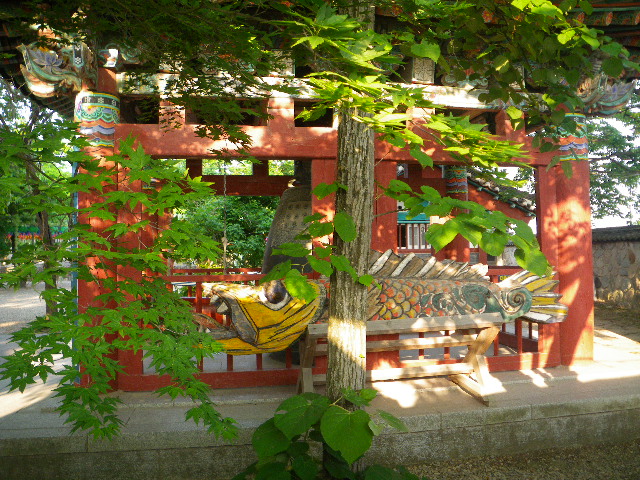
Today I visited sites around Gyeongju proper, particularly the royal tumuli (burial mounds), the oldest observatory in East Asia, and the Gyeongju national museum.
The owner of the pension where I am staying encouraged me to borrow a bicycle, so this morning I biked the 5km or so down to Gyeongju. After wandering around the town (I was surprised to find that the main river runs towards the west, rather than East towards the nearby Sea of Japan), I found some of the tumuli. This one is the largest, and is called Bonghwadae. Presumably there is a king buried underneath. You can see my bicycle underneath it, and some very nice trees growing on the mound.

There is a park enclosing many of the tumuli. One of them, Cheonmachong, is open to the public. The signs said not to take pictures, but many people were taking pictures anyway, so I took a few. This is the burial site, showing the jewelry that was buried with the king.
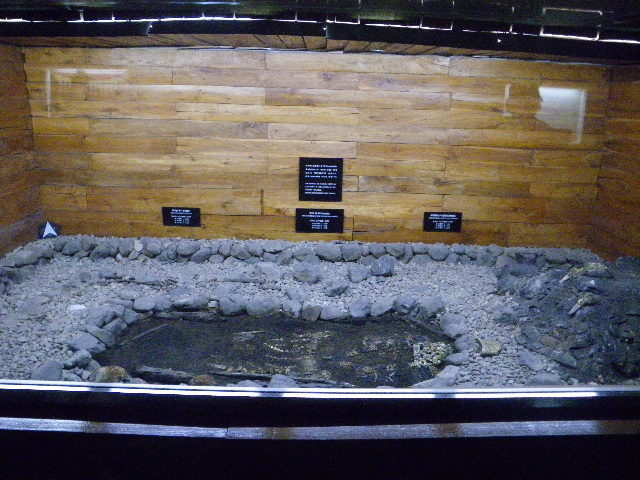
A gold crown was also found in this tomb (this is a replica).

The name Cheonmachong means heavenly horse tomb. It is called that because a painting of a heavenly horse is one of the artifacts found in the tomb. Here is a picture of a picture of that heavenly horse, a sign using that symbol, and a friendly king and queen welcoming us to Gyeongju.
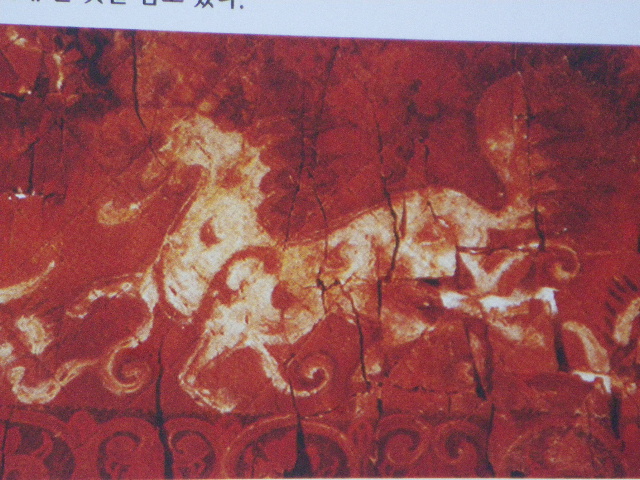
|
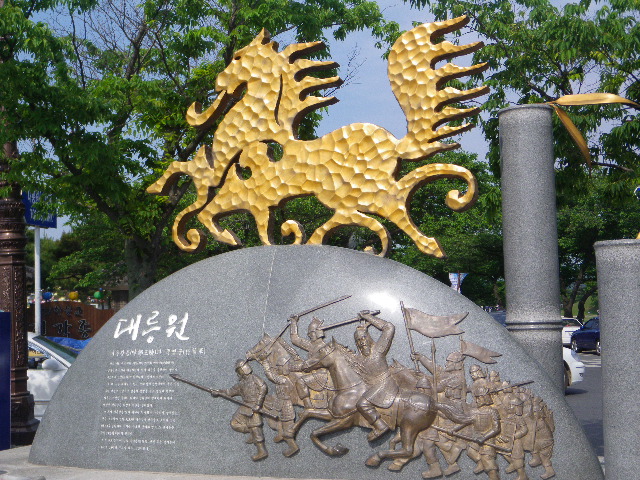
|
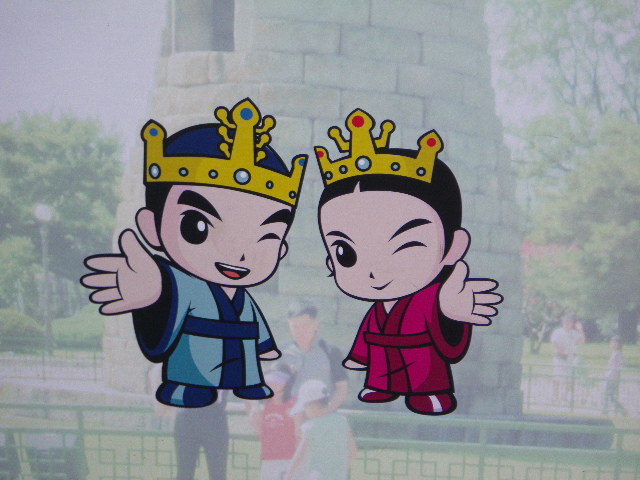
|
There are many more tumuli in the neighborhood.

The wide open spaces make it a good place for people to fly kites.
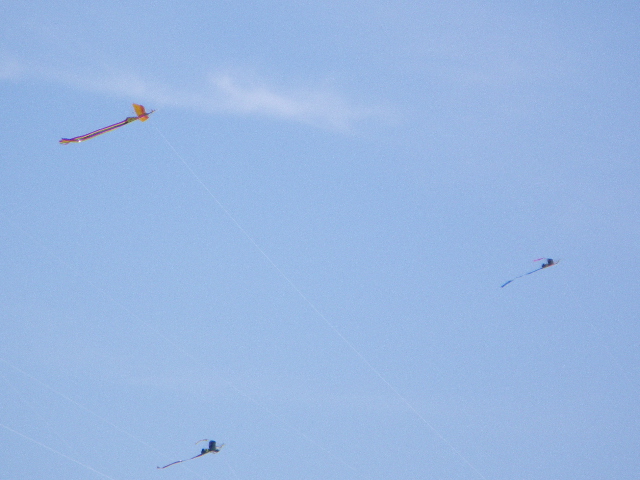
This area also boasts the oldest astronomical observatory in East Asia, built between 632 and 646 AD. The entrance is the opening in the side.
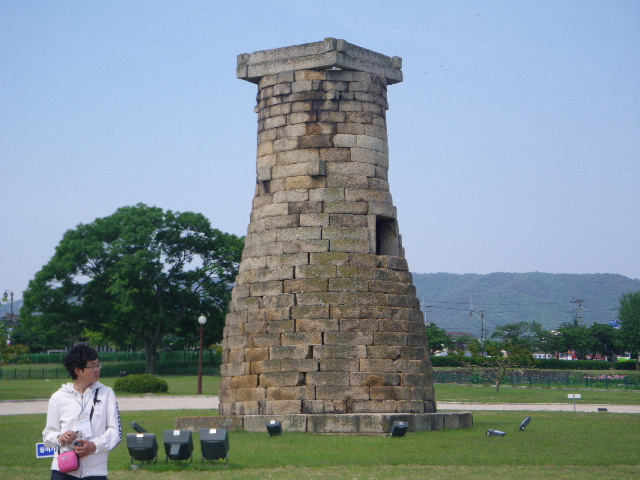
On the topic of astronomy, tomorrow should be an annular solar eclipse. I believe here in Korea it will be a partial solar eclipse.
This lotus pond is called Anapji (ducks and geese pond). When it was drained for maintenance in 1975, many objects were found in it from a fire at a neighboring building in 935 AD. The objects are now stored in Gyeongju National museum, which is nearby. The lotuses are just beginning to bloom.
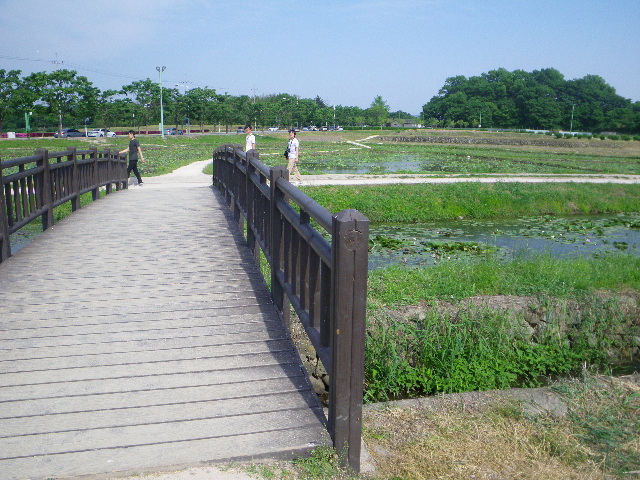
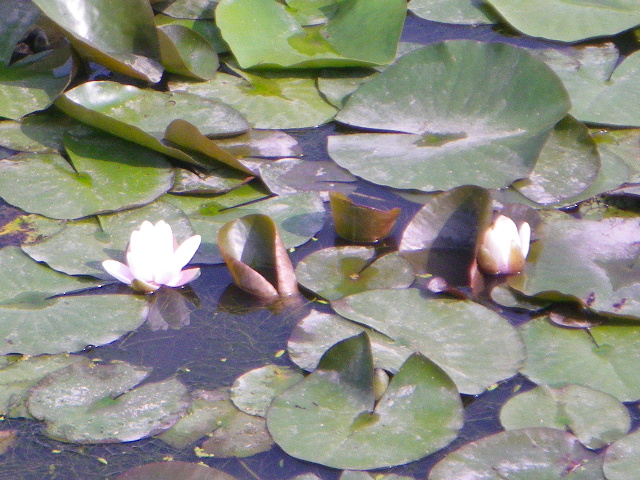
|
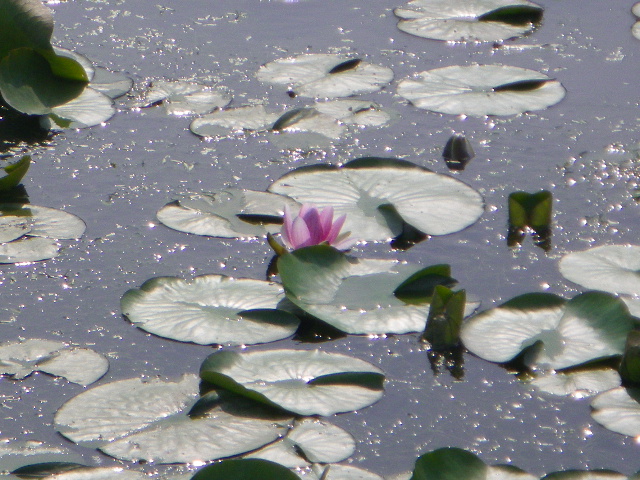
|
The museum includes a very impressive bell (the bell of King Seongdeok), the second oldest bell in Korea among all the bells which the manufacture date is known -- 771 AD.

There are also different petroglyphs at the museum. I believe this is a replica.

Because taking pictures inside the museum is not permitted, I did not take any pictures. However, there is the original of the crown from Cheonmachong, as well as much other beautiful jewelry. There are also many weapons, ceramics, and utensils from the Shilla period.
And I did take a picture of the outside of the museum.

Also, about a mile away is a rather unusual pagoda built out of bricks, in a temple called Bunhwang-sa. I got there at 6pm, as they were closing, so I wasn't able to go in, but I took this picture over the wall.

And then I noticed an interesting fish.
